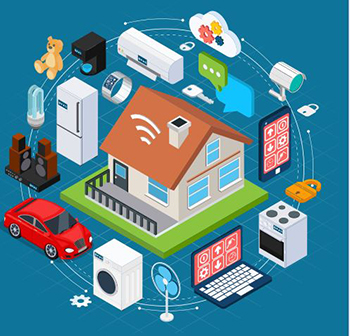Inside Your Connected Home: Protect Your Always-On Family
posted
on Wednesday, October 2, 2019
in
Security & Fraud Information
 Every day, your house connects to the internet in ways you might not even realize – today’s appliances, toys, lighting, TVs, cameras are rapidly advancing in technology. And outside your home, there’s so much more that’s connected – from your car to the roads you travel on to your whole city.
Every day, your house connects to the internet in ways you might not even realize – today’s appliances, toys, lighting, TVs, cameras are rapidly advancing in technology. And outside your home, there’s so much more that’s connected – from your car to the roads you travel on to your whole city.
Cutting-edge technology can make your daily home activities easier and unlock potential for the future, but it’s important to remember to STOP. THINK. CONNECT.™ Take security precautions, think about how your information is shared and connect your devices to the internet with more peace of mind.
LEARN HOW TO SAFEGUARD YOUR IoT DEVICES: Protecting devices like wearables and smart appliances can be different than securing your computer or smartphone. Research how to keep an IoT device secure before you purchase it, and take steps to safeguard your device over time.
PAY ATTENTION TO THE WI-FI ROUTER IN YOUR HOME: Use a strong password to protect the device, keep it up to date and name it in a way that won’t let people know it’s in your house.
DELETE WHEN DONE: Many of us download apps for specific purposes or have apps that are no longer useful or interesting to us. It’s a good security practice to delete apps you no longer use.
OWN YOUR ONLINE PRESENCE: Understand what information your devices collect and how it’s managed and stored – and set the privacy and security settings on devices to your comfort level for information sharing.
RESEARCH BEFORE YOU BUY: Before adopting a new smart device, do your research to make sure others have had positive experiences from a security and privacy perspective.
LOCK DOWN YOUR LOGIN: Fortify your online accounts by enabling the strongest authentication tools available, such as biometrics, security keys or a unique one-time code through an app on your mobile device. Your usernames and passwords are not enough to protect key accounts like email, banking and social media.